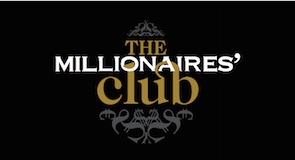It’s a peculiarity of our industry that we rarely take a moment to look at spirits sales as a whole.
 Commentators – and indeed Drinks International – tend to focus on brands, categories or take a market approach to analysis. This magazine is exactly that, but before we zoom in, let’s zoom out to take a more considered view of the total sales of distilled spirits across the globe in 2015.
Commentators – and indeed Drinks International – tend to focus on brands, categories or take a market approach to analysis. This magazine is exactly that, but before we zoom in, let’s zoom out to take a more considered view of the total sales of distilled spirits across the globe in 2015.
Our friends at global data agency Euromonitor International (who provided all data in this introduction) say $472bn/£327bn was spent on 2.4bn 9-litre cases globally in 2015. But contain your excitement – that only amounted to volume growth of 0.8%. Not exactly bait to a headline writer.
It’d be seriously stretching the realms of accurate analysis to say spirits are in buoyant growth, or to suggest anything to the contrary. By region only Africa & Middle East edged growth beyond 5% – every other region was a variation on flat.
It’s over a five-year period that we see some movement. From 2011-2015, the world drank 5.6% more spirits. It’s about now we’d say this is down to a combination of intricate factors but it wasn’t. This growth is down to three regional markets of the world drinking more spirits. Asia Pacific, which is where more than half of spirits are consumed, was 15% thirstier during the five-year period, driven by China (up 22%) and India (up 14%). Africa & Middle East is where a little over a quarter of spirits are consumed, and grew its consumption by 26% in the past five years. North America, about a tenth of spirits sales, grew volumes 11% during the period. Europe and Latin America were the villains of the piece, with eastern Europe down 21%, western Europe down 5% and Latin America down 2%.
Premium brands tend to talk about value over volume, but the old measurement of counting sales by bottles and cases is still of great importance – particularly in markets where consumer wealth doesn’t allow for scaling of value, even for the big global players. If the past year has taught us anything, it is that premiumisation is not the one-way track they thought it was. De-premiumisation hasn’t yet been coined as a term by the big spirits companies (we’ll be waiting a while) but there has been a slight change in the narrative. Diageo and Pernod Ricard have renewed focus on building volume in their more mainstream whiskies, for example. It’s better to gain drinkers than lose them, no matter if it’s low-margin product, they might reason. Not that the premiumisation bubble has burst, but in the short term simply shifting stock for many spirits companies has become a priority.
Which leads us to this year’s list – the world’s largest distillers and purveyors of spirts. We’ll get into the detail later on in this supplement, but first let’s look at the 171 million-case brands as a group. First, we should point out that we have two more brands than last year, but are eight short of our 2014 peak of 179. In truth, there are more out there. We’ve tried to list those we suspect of millionaire status in our Undisclosed list at the bottom of the main list, but there are undoubtably a few more lurking deep in dark markets. Likely there are some, for tax management purposes, that aren’t so keen on opening their books in public.



